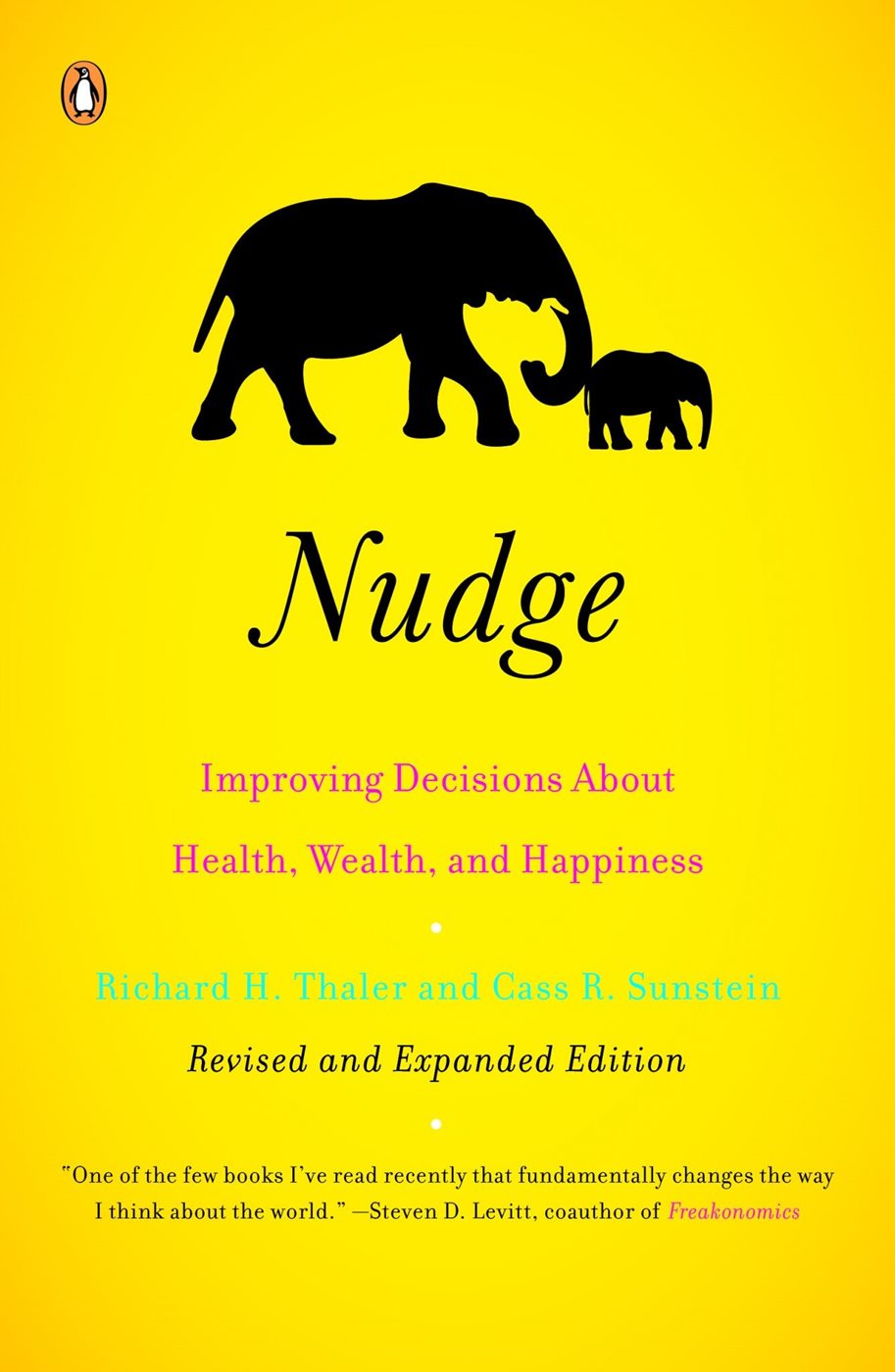February 2019

Let’s Nudge!
On 5th November, 2018, Mays Business School organized an MBA Speaker Series. Four MBA students spoke during the event:
- Jay Jani – “Let’s Nudge”
- John Buancore – “Personal Workout Routine”
- Steve Carlson – “Grand Theft Aircraft: Seatac”
- Joe Weatherford – “Reflections of an MBA”
.jpg)
How many of you keep an alarm clock for the morning??? ….. Almost everyone! Trivial question, isn’t it? Unless you got an exceptional biological clock, an alarm is essential ….and for people like me, at least five alarms are essential!
But have you thought what kind of a tool the alarm clock is! Is it a forcing tool that gets you going every day? No. Because when it beeps, it doesn’t force you to wake up. It is entirely your choice to do a somersault in the bed or go back to your fantasy world. What alarm clock does is to nudge you to wake up!
So, what are nudges? Nudges are interventions, policies, or decisions that rely on behavioural science to steer people in a particular direction, but at the same time preserve their freedom of choice. Nudging relies on subtle psychological steps to guide human beings to make choices that are more beneficial for themselves or for society in the long-run.
Governments all across the world are nudging people to become better citizens. In my home country, India, recently a State Government drew 3-D prints on roads near pedestrian crossings. It was a silent way to nudge people to slow down their vehicles. Those 3-D art works would make people feel as if there was a bump or some object in the way. Aren’t such nudges way better than those back breaking bumps that seem to act like a stimulus package to physiotherapy industry in India? Some bumps there are bigger than camel’s humps.
The potential for nudging has proved so great that some governments, including those of the UK and the USA, have set up “Nudge Units” to help push pro-environment, pro-saving and pro-health agendas.


Think about Singapore’s tremendous economic success in the past 50 years. Much of that is attributed to many of the nudges. Look at one of the examples here. Along with a customer’s energy consumption, their government started giving neighbor’s energy consumption data as well. This helped them nudge their citizens into energy conservation.


When you go to a restaurant and see a billboard outside displaying amount of waste generated previous day, it nudges you to create less waste today. Manufacturing units nudge their employees all the time to follow safe operating practices by putting up posters and quotes inside the factories.


When you write ‘Going Green’ in your emails, it nudges someone to avoid printing it.

Source: abovethelaw.com
We promise ourselves that we'll eat a healthier diet and exercise more, yet more than a third of American adults are obese, with a medical price tag approaching $150 billion annually. But, if you have to convince yourself or your kid to eat a healthier diet, its better to nudge rather than say explicitly. How can you do that? Let me share what my mother did. For many years she kept scolding me to eat more dry fruits and less chocolates. However, I absolutely hated those bland fruits that gave no pleasure in eating. One day, my mother placed dry fruits in a transparent chocolate box that we got for Diwali. She put that box adjacent to refrigerator and close to the shelf where we stored all the snacks. Guess what! Two months after that, I ate more dry fruits than I did two years before that. That transparent box and its placement turned out to be a powerful nudge for me.

Corporate companies use nudges a lot. A company’s new employees were required to indicate their preferred contribution rate in a workplace savings plan within their first month of employment. Compared with an enrollment system that asked employees to choose whether they wanted to go for a contribution, this active-decision nudge increased the average contribution rate in the first year of employment by more than 1% of salary. The nudge was effective because it ensured that procrastination would not prevent new employees from signing up for the plan. US army did something similar and see what happened!

The enrollment rate spiked!
So, what does all these mean to us? What can graduate students do with all these….. apart from hitting targets well? We can use nudges in our day-to-day lives in any of the following three ways:
First, Change Default: Before asking anyone to take a decision, think about the default choice you are offering! Imagine if you hit the print button on your computer and the default option is set as print to pdf, many people would refrain from going for the actual paper print.
My last employer used this kind of an approach to nudge its employees. When my company wanted to make employees contribute money during an emergency flood situation, it automatically triggered a salary deduction notification. The notification gave employees a fortnight’s time if they wanted to opt out of that donation. But, since the default option was to donate, a vast majority of employees contributed as their inertia took them away from clicking ‘No’. If the company had instead asked for voluntary contribution, the number of people donating might have easily been way low. A friend of mine in Dupont told me that his company is starting the same nudge.

Second, Show the way: If you need to motivate people to act, either get them to make a plan of how they’ll do the desired future activity, or help them take a small step.
For example, a Harvard University Professor, Todd Rogers found that if he asked voters how they’ll get to the voting booth, and what they’ll be doing beforehand, it significantly increased voter turnout. Asking these planning questions effectively created a ‘trigger point’ in people’s minds — so on voting day, they remembered planning for it, and they were more likely to do it. Result – poll turnout was higher by 4% in the group that was asked these questions.
BCG wanted to improve its culture on work-life balance side and it came out with this nudge that asked whether an employee wanted to delay an email if it was outside of working hours. Remember – BCG is giving complete freedom to its employees to shoot that email but the nudge may help reduce frequency of inessential emails.


Third and the most important. Use nudges to induce positivity. Let’s see –
How many of you know the name ‘Adolf Hitler’??? …. Almost everyone. Stupid question again! But wait - how many of you know ‘Oskar Schindler’? Far lesser hands than the previous case. Oskar Schindler was the person who saved over 1000 Jews during the Holocaust. My point is the world has a habit of remembering more negatives, more nefarious names and incidences. And our 24x7 media promotes that bad habit even more. This is not surprising however as human brains are wired to see negativity. A Harvard Business Research has proven that. Our genes were manufactured that way so that our minds could remain alert and vigilant to any kind of threat or danger!
In your work, constantly think about how you can reframe or rephrase words or actions that lead to a more positive and sustainable imprint in people’s memory. Try to do this with your speeches, emails, or day-to-day communication.
Let’s look at an example:
"We regret to inform you that we cannot process your application to register your business name, since you have neglected to provide sufficient information. Please complete ALL sections of the attached form and return it to us."
Contrast this example with a re-written more positive approach.
"Congratulations on your new business. To register your business name, we need some additional information. If you return the attached form, with highlighted areas filled in, we will be able to send you your business registration certificate within two weeks. We wish you success in your new endeavor."
That’s why it’s better to project regression results as ‘We do not accept due to the existing criteria’ rather than saying ‘We reject!’.
Any product you design, any business decision you make, or any marketing campaign you run can be tweaked to DISCOVER.TRANSFORM. IMPACT in a much more positive way.
To summarize, use nudges to 1. Change defaults, 2. Show the way and 3. Induce positivity. Try to use nudges so that the world remembers more of someone like Oskar Schindler than someone less worthy!

